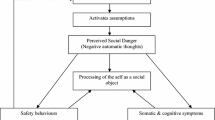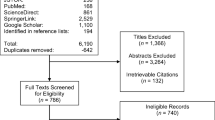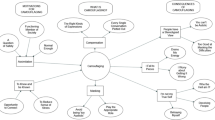Abstract
Effective training programs for individuals with disabilities often involve the use of positive reinforcement. Social interactions have many benefits over other forms of reinforcement, but more research is needed to determine how to identify social interactions that serve as reinforcers. In the first experiment, we evaluated the use of two procedures to assess preference for social interactions: a video-presentation and a picture-presentation paired-choice preference assessment among five boys diagnosed with a developmental disability. In the second experiment, we conducted concurrent operant reinforcer assessments to validate the results of the preference assessments among three of the five participants in which at least one assessment indicated differentiated preferences. The video-presentation and picture-presentation preference assessments resulted in the identification of the same high-preferred social interactions for two of the three participants, and subsequent reinforcer assessments indicated these social interactions served as reinforcers. The results of the video- and picture-presentation preference assessments differed for the final participant. The results of a concurrent operant reinforcer assessment indicated the social interaction identified as highest preferred in the video-presentation assessment served as a relatively more effective reinforcer. Results of this study indicate that video- and picture-presentation preference assessment results in differentiate responding for some participants, but not others; however, reasons for these results remain unknown. Moreover, a video-presentation preference assessments may be more effective in identifying social reinforcers, but evidence should be considered; preliminary and future research is warranted.



Similar content being viewed by others
References
Brodhead, M. T., Abston, G. W., Mates, M., & Abel, E. A. (2017). Further refinement of video-based brief multiple-stimulus without replacement preference assessments. Journal of Applied Behavior Analysis, 50, 170–175. https://doi.org/10.1002/jaba.358.
Clark, D. R., Donaldson, J. M., & Kahng, S. (2015). Are video-based preference assessments without access to selected stimuli effective. Journal of Applied Behavior Analysis, 48, 1–6. https://doi.org/10.1002/jaba.246.
Clay, C. J., Samaha, A. L., Bloom, S. E., Bogoev, B. K., & Boyle, M. A. (2013). Assessing preference for social interactions. Research in Developmental Disabilities, 34, 362–371. https://doi.org/10.1016/j.ridd.2012.07.028.
Clay, C. J., Samaha, A. L., & Bogoev, B. K. (2018). Assessing preference for and reinforcing efficacy of components of social interaction in individuals with autism spectrum disorder. Learning and Motivation, 62, 4–14. https://doi.org/10.1016/j.lmot.2017.03.008.
Davis, T. N., Hodges, A., Weston, R., Hogan, E., & Padilla-Mainor, K. (2017). Correspondence between preference assessment outcomes and stimulus reinforcer value for social interactions. Journal of Behavioral Education, 26, 238–249. https://doi.org/10.1007/s10864-017-9271-x.
DeLeon, I. G., & Iwata, B. A. (1996). Evaluation of a multiple-stimulus presentation format for assessing reinforcer preferences. Journal of Applied Behavior Analysis, 29, 519–533. https://doi.org/10.1901/jaba.1996.29-519.
Fisher, W., Piazza, C. C., Bowman, L. G., Hagopian, L. P., Owens, J. C., & Slevin, I. (1992). A comparison of two approaches for identifying reinforcers for persons with severe to profound disabilities. Journal of Applied Behavior Analysis, 25, 491–498. https://doi.org/10.1901/jaba.1992.25-491.
Hagopian, L. P., Long, E. S., & Rush, K. S. (2004). Preference assessment procedures for individuals with developmental disabilities. Behavior Modification, 28, 668–677. https://doi.org/10.1177/0145445503259836.
Kang, S., O’Reilly, M., Lancioni, G., Falcomata, T. S., Sigafoos, J., & Xu, Z. (2013a). Comparison of the predictive validity and consistency among preference assessment procedures: A review of the literature. Research in Developmental Disabilities, 34, 1125–1133. https://doi.org/10.1016/j.ridd.2012.12.021.
Kang, S., O’Reilly, M., Rojeski, L., Blenden, K., Xu, Z., Davis, T., et al. (2013b). Effects of tangible and social reinforcers on skill acquisition, stereotyped behavior, and task engagement in three children with autism spectrum disorders. Research in Developmental Disabilities, 34, 739–744. https://doi.org/10.1016/j.ridd.2012.10.007.
Kelly, M. A., Roscoe, E. M., Hanley, G. P., & Schlichenmeyer, K. (2014). Evaluation of assessment methods for identifying social reinforcers. Journal of Applied Behavior Analysis, 47, 113–135. https://doi.org/10.1002/jaba.107.
Mechling, L. C., & Moser, S. V. (2010). Video preference assessment of students with autism for watching self, adults, or peers. Focus on Autism and Other Developmental Disabilities, 25(2), 76–84. https://doi.org/10.1177/1088357610364392.
Nuernberger, J. E., Smith, C. A., Czapar, K. N., & Klatt, K. P. (2012). Assessing preference for social interaction in children diagnosed with autism. Behavioral Interventions, 27, 33–44. https://doi.org/10.1002/bin.1336.
O’Reilly, M., Lang, R., Davis, T., Rispoli, M., Machalicek, W., Sigafoos, J., et al. (2009). A systematic examination of different parameters of presession exposure to tangible stimuli that maintain problem behavior. Journal of Applied Behavior Analysis, 42, 773–783. https://doi.org/10.1901/jaba.2009.42-773.
Pace, G. M., Ivancic, M. T., Edwards, G. L., Iwata, B. A., & Page, T. J. (1985). Assessment of stimulus preference and reinforcer value with profoundly retarded individuals. Journal of Applied Behavior Analysis, 18, 249–255. https://doi.org/10.1901/jaba/1985.18-249.
Parsonson, B. S., Baer, A. M., & Baer, D. M. (1974). The application of generalized correct social contingencies: An evaluation of a training program. Journal of Applied Behavior Analysis, 7, 427–437. https://doi.org/10.1901/jaba.1974.7-427.
Roscoe, E. M., Iwata, B. A., & Kahng, S. (1999). Relative versus absolute reinforcement effects: Implications for preference assessments. Journal of Applied Behavior Analysis, 32, 479–493. https://doi.org/10.1901/jaba.1999.32-479.
Smaby, K., MacDonald, R. P. F., Ahearn, W. H., & Dube, W. V. (2007). Assessment protocol for identifying preferred social consequences. Behavioral Interventions, 22, 311–318. https://doi.org/10.1002/bin.242.
Weeden, M., & Poling, A. (2011). Identifying reinforcers in skill acquisition studies involving participants with autism: Procedures reported from 2005 to 2009. Research in Autism Spectrum Disorders, 5, 288–291. https://doi.org/10.1016/j.rasd.2010.05.004.
Wolfe, K., Kunnavatana, S. S., & Shoemaker, A. M. (2017). An investigation of a video-based preference assessment of social interactions. Behavior Modification, 42, 729–746. https://doi.org/10.1177/014544551773.
Author information
Authors and Affiliations
Corresponding author
Ethics declarations
Ethical Approval
All procedures performed in studies involving human participants were in accordance with the ethical standards of the institutional and/or national research committee and with the 1964 Helsinki Declaration and its later amendments or comparable ethical standards. This article does not contain any studies with animals performed by any of the authors.
Informed Consent
Informed consent was obtained from all individual participants included in the study.
Additional information
Publisher's Note
Springer Nature remains neutral with regard to jurisdictional claims in published maps and institutional affiliations.
Rights and permissions
About this article
Cite this article
Davis, T., Weston, R., Hodges, A. et al. Comparison of Picture- and Video-Presentation Preference Assessments for Social Interactions. J Behav Educ 31, 367–387 (2022). https://doi.org/10.1007/s10864-020-09402-5
Published:
Issue Date:
DOI: https://doi.org/10.1007/s10864-020-09402-5




